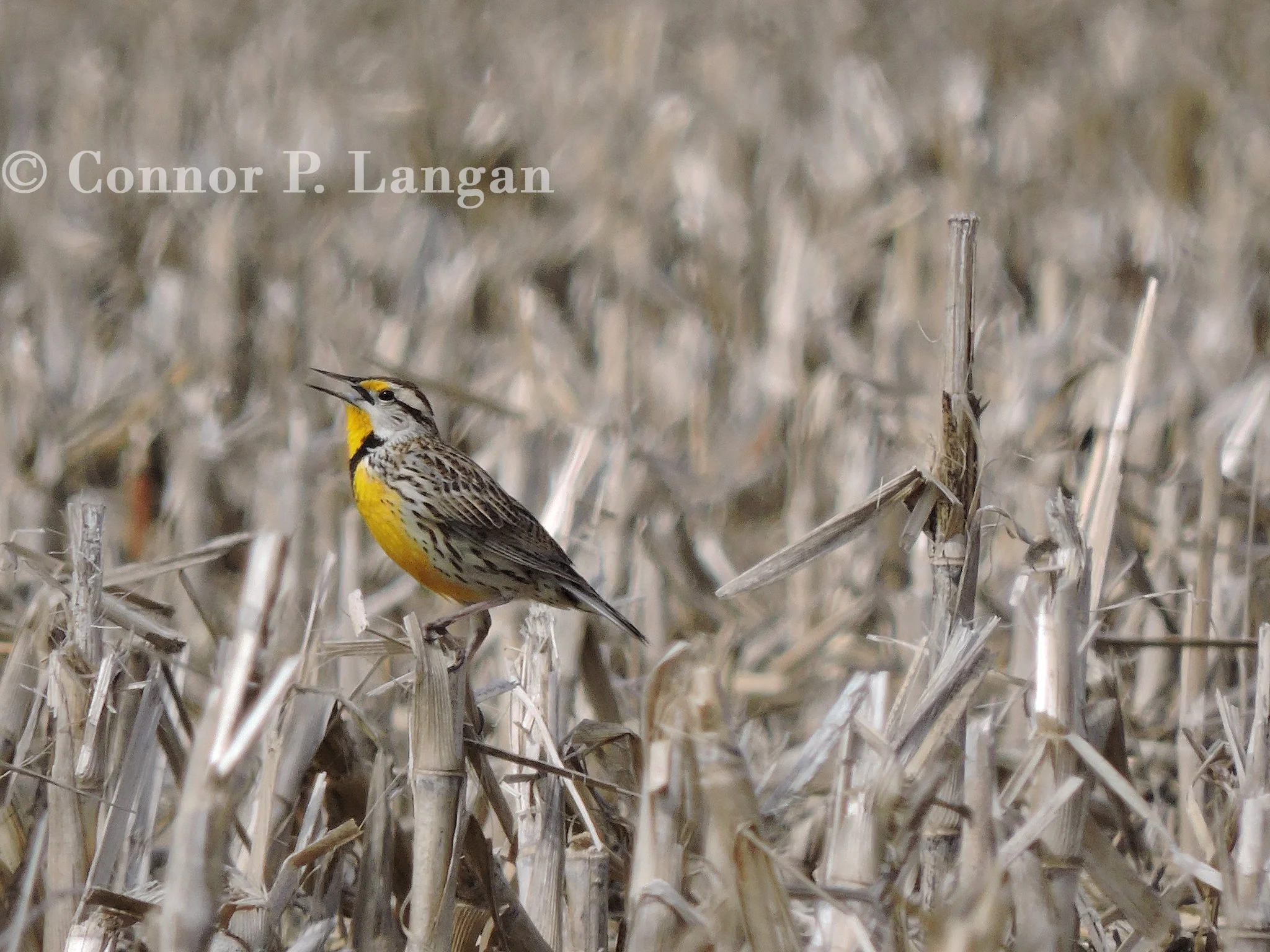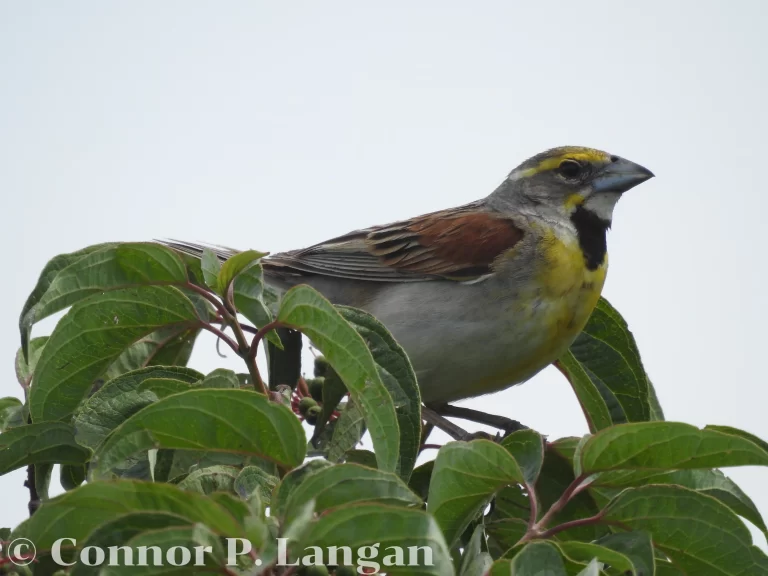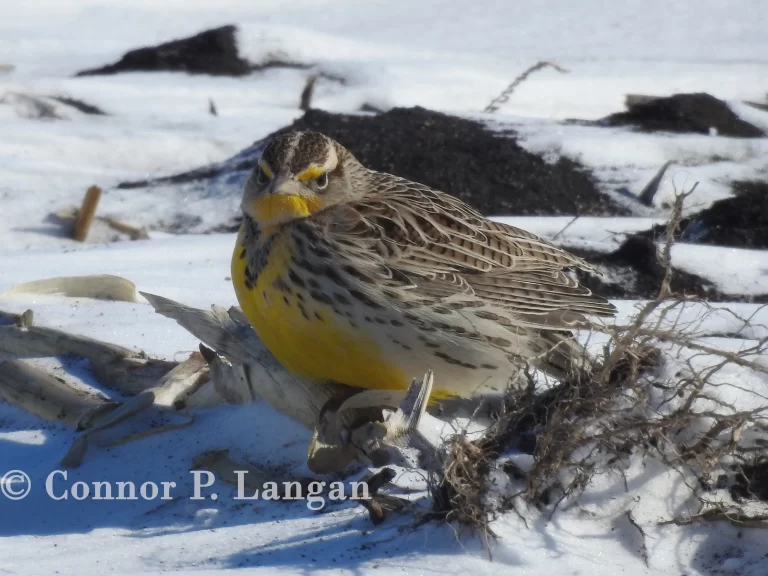Description
Eastern Meadowlarks are rotund blackbirds with large heads, short tails, and lengthy pointed beaks. This species is monomorphic.
These blackbirds can vary considerably in their length, measuring 7.5 to over 10 inches long. Eastern Meadowlarks may weigh just 3.2 ounces to just over 5 ounces.
Male and female Eastern Meadowlarks have brown crowns, yellow and white supercilia, dark lines extending behind their eyes, white cheeks, and yellow throats. This species has a dark necklace shaped like a V that covers much of its chest.
Eastern Meadowlarks have yellow stomachs, light brown flanks, and backs that are mottled with black, brown, and white colors.
Individuals are paler in the nonbreeding season, but they look largely the same during the breeding and nonbreeding seasons.
Eastern Meadowlarks are very similar to Western Meadowlarks. The best way to separate Eastern Meadowlarks from Western Meadowlarks is to distinguish them by their songs. If you get a close look at a meadowlark, Eastern Meadowlarks have paler tails in flight and darker crowns than their Western counterparts.
Behavior
Male Eastern Meadowlarks are territorial during the breeding season, as they sing constantly and spar with other males to establish territories. During the nonbreeding season, males keep a low profile as they forage and hide amongst grasses.
Female Eastern Meadowlarks are secretive all year, as they rarely leave the cover of dense grasses.
Diet
Eastern Meadowlarks are primarily insectivorous during the spring, summer, and fall. In the winter, they may resort to eating seeds, fruits, and grains if insects are not available.

Habitat
Eastern Meadowlarks are grassland specialists, but they have learned to be fairly adaptable when sizable grasslands are absent. This species will breed and forage in prairies, rangelands, airports, fallow fields, and anywhere with considerable tracts of grass.
Range
These blackbirds have a massive range, with birds spanning from southeast Canada to Brazil. In the United States, this species occurs east of the Great Plains. Eastern Meadowlarks breed in far southeastern Canada, but Eastern Meadowlarks at the northern limits of their range migrate to more southerly locales during the winter.
Eastern Meadowlarks also occur in Cuba, Mexico, Central America, and northern South America where they are year-round residents.
Breeding
Eastern Meadowlarks are polygynous by nature, with the most dominant males attracting several females to their territory. Males that are not as experienced or dominant may struggle to establish a territory and attract females, so many males are left without mates.
Females take full responsibility for nest construction endeavors – a process that takes them as little as 4 and as many as 8 days. They seek out some sort of depression in a patch of dense grasses where they build cup-shaped nests out of grasses, leaves, and plant fibers. Females may build simple cup-shaped nests or complex nests that include several chambers.
Eastern Meadowlarks produce 1 to 2 broods of eggs every year, with each clutch containing as few as 2 and as many as 7 eggs. Eggs are incubated by the female for 13 to 16 days, and nestlings leave the nest a little over 10 days later.
Backyard Birding
Eastern Meadowlarks are not a species that will visit a bird feeder, nest in a birdhouse, or bathe in a birdbath. If a landowner wants to attract Eastern Meadowlarks to their property, their best bet is to have several acres of continuous prairie grass planted.
Population Status
Eastern Meadowlarks have a global population that totals close to 40 million birds. While this may seem like a sizable population, this species has lost 75% of its total population in the last half-century.
The dramatic losses that Eastern Meadowlarks have experienced can be largely attributed to a loss of grassland habitat and the conversion of small farms into large farming operations.



